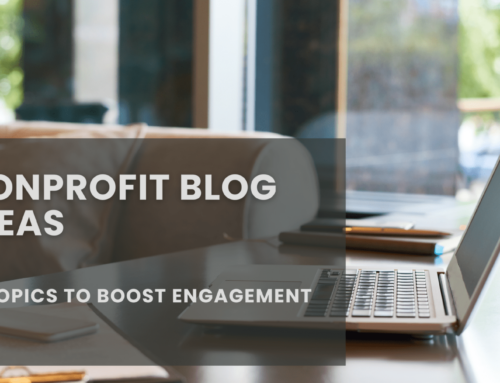For nonprofit organizations, fundraising is a crucial aspect of their operations. It is through donations that they are able to fund their programs and initiatives, and ultimately make a difference in the lives of those who they serve. However, getting donors to give is only half the battle. The real challenge lies in retaining those donors over the long-term and increasing their lifetime value.
This is where understanding the psychology of giving comes into play. By gaining an understanding of why people give and what motivates them to continue giving, nonprofits can develop strategies to increase donor retention and lifetime value. In this article, we will explore 18 tips to help nonprofits achieve these goals.
These tips range from understanding the importance of expressing gratitude to donors, to creating a sense of urgency around giving, to leveraging social proof to encourage others to donate. We will also delve into the power of storytelling and the role it plays in creating an emotional connection between donors and the organization.
By implementing these tips, nonprofit organizations can develop a deeper understanding of the psychology of giving and use this knowledge to build stronger relationships with their donors, increase retention rates, and ultimately make a greater impact in their communities.
The Power of Gratitude: How Showing Appreciation to Donors Can Increase Their Loyalty and Giving
Donors are critical to the success of nonprofit organizations. Therefore, it is essential to show appreciation to them to keep them engaged and loyal. Donor appreciation can take different forms, including a simple thank you message, personalized communication, exclusive donor events, and recognition programs. Here are some reasons why gratitude is essential in increasing donor loyalty and giving:
- Gratitude strengthens relationships: When donors feel appreciated, they are more likely to continue supporting your cause. They also feel valued and part of your organization’s community.
- Gratitude encourages future giving: Donors who feel appreciated are likely to give more in the future. A simple thank you message or personalized communication can go a long way in increasing future donations.
- Gratitude sets you apart: Donors are more likely to donate to an organization that shows appreciation for their support. This sets you apart from other nonprofits and increases the chances of donor loyalty.
Understanding the Psychology of Giving: How Knowing Why People Give Can Help You Increase Donor Retention and Lifetime Value
Understanding why people give is crucial in developing effective fundraising strategies. People give for different reasons, including personal values, emotional connections, and the desire to make a difference. Understanding these motivations can help nonprofit organizations create messaging that resonates with donors, increasing donor retention and lifetime value. Here are some ways understanding the psychology of giving can help you increase donor retention and lifetime value:
- Personalized messaging: Tailoring your messaging to donor motivations can help you connect with them emotionally and increase the chances of future giving.
- Improved donor experiences: Understanding why people give can help you create better donor experiences that resonate with them and increase their loyalty.
- Increased donor engagement: Connecting with donors on a personal level can increase their engagement with your organization, leading to more significant lifetime value.
The Importance of Storytelling: How Sharing Compelling Stories Can Help Donors Connect Emotionally to Your Cause and Increase Their Giving
Storytelling is a powerful tool in creating emotional connections with donors. Compelling stories can help donors understand the impact of their giving, the people they are helping, and the difference their support makes. Here are some reasons why storytelling is essential in nonprofit fundraising:
- Emotional connection: Stories create emotional connections between donors and your organization’s cause, increasing the likelihood of continued support.
- Increased engagement: Sharing stories can help donors understand the impact of their giving, leading to increased engagement and support.
- Credibility: Stories that showcase your organization’s impact can increase donor trust and credibility, leading to more significant donations and loyalty.
The Role of Personalization: How Tailoring Your Messaging and Outreach to Individual Donors Can Help You Build Stronger Relationships and Increase Giving
Personalization is crucial in nonprofit fundraising. Tailoring your messaging and outreach to individual donors can help you create better donor experiences, increase engagement, and build stronger relationships. Here are some ways personalization can help nonprofit organizations increase giving:
- Increased relevance: Personalized messaging is more relevant to individual donors, increasing the likelihood of engagement and future giving.
- Better donor experiences: Personalization can help you create better donor experiences that resonate with donors, increasing their loyalty and lifetime value.
- Improved communication: Personalized communication can help you create more effective communication strategies that lead to increased donations and retention.
The Impact of Transparency: How Being Transparent About How Donations Are Used Can Increase Donor Trust and Loyalty
Transparency is critical in nonprofit fundraising. Donors want to know how their donations are being used and the impact they are making. Being transparent about your organization’s financials, impact, and activities can increase donor trust and loyalty. Here are some ways transparency can help increase donor trust and loyalty:
- Increased credibility: Transparency can help nonprofits establish credibility and trust with donors, leading to increased donations and loyalty.
- Better donor experiences: Transparent communication can help donors understand the impact of their giving, leading to better donor experiences and increased engagement.
- Stronger relationships: Transparency can help nonprofits build stronger relationships with donors, leading to increased retention and lifetime value.
The Power of Social Proof: How Highlighting the Impact of Your Work and the Support of Other Donors Can Encourage People to Give
Social proof is a powerful tool in nonprofit fundraising. Highlighting the impact of your work and the support of other donors can encourage people to give. Here are some ways social proof can help nonprofit organizations increase giving:
- Increased credibility: Social proof can help establish your organization’s credibility and trustworthiness, leading to increased donations and loyalty.
- Emotional connection: Seeing the impact of your work and the support of other donors can create emotional connections with potential donors, leading to increased engagement and support.
- Increased donations: Highlighting the impact of your work and the support of other donors can encourage people to give, leading to increased donations and lifetime value.
The Role of Reciprocity: How Offering Exclusive Benefits or Recognition to Donors Can Increase Their Loyalty and Giving
Reciprocity is a powerful motivator in nonprofit fundraising. Offering exclusive benefits or recognition to donors can increase their loyalty and giving. Here are some ways reciprocity can help nonprofit organizations increase giving:
- Increased loyalty: Offering exclusive benefits or recognition can increase donor loyalty, leading to continued support and increased lifetime value.
- Better donor experiences: Reciprocity can help you create better donor experiences that resonate with donors, leading to increased engagement and support.
- Increased donations: Offering exclusive benefits or recognition can encourage people to give, leading to increased donations and support for your cause.
Understanding Donor Motivations: How Understanding Why People Give Can Help You Tailor Your Outreach and Messaging to Increase Giving
Understanding why people give is crucial in developing effective fundraising strategies. People give for different reasons, including personal values, emotional connections, and the desire to make a difference. Understanding these motivations can help nonprofit organizations create messaging that resonates with donors, increasing donor retention and lifetime value. Here are some ways understanding donor motivations can help you increase giving:
- Personalized messaging: Tailoring your messaging to donor motivations can help you connect with them emotionally and increase the chances of future giving.
- Improved donor experiences: Understanding why people give can help you create better donor experiences that resonate with them and increase their loyalty.
- Increased donor engagement: Connecting with donors on a personal level can increase their engagement with your organization, leading to more significant lifetime value.
The Importance of Consistency: How Regularly Communicating with Donors Can Help You Build Lasting Relationships and Increase Giving
Consistency is crucial in nonprofit fundraising. Regularly communicating with donors can help you build lasting relationships and increase giving. Here are some ways consistency can help nonprofit organizations increase giving:
- Increased engagement: Regular communication can help you stay top-of-mind with donors, leading to increased engagement and support.
- Better donor experiences: Consistent communication can help you create better donor experiences that resonate with donors, leading to increased loyalty and lifetime value.
- Increased donations: Regular communication can encourage people to give, leading to increased donations and support for your cause.
The Role of Emotions: How Tapping into Donors’ Emotions and Values Can Increase Their Connection to Your Cause and Their Giving
Emotions play a significant role in nonprofit fundraising. Tapping into donors’ emotions and values can increase their connection to your cause and their giving. Here are some ways emotions can help nonprofit organizations increase giving:
- Emotional connection: Tapping into donors’ emotions and values can create emotional connections with your cause, leading to increased engagement and support.
- Increased donations: Emotional appeals can encourage people to give, leading to increased donations and lifetime value.
- Better donor experiences: Connecting with donors on an emotional level can help you create better donor experiences that resonate with them, leading to increased loyalty and retention.
The Impact of Donor Retention: How Retaining Donors Can Be More Cost-Effective Than Acquiring New Ones and Can Increase Your Organization’s Impact
Donor retention is crucial in nonprofit fundraising. Retaining donors can be more cost-effective than acquiring new ones and can increase your organization’s impact. Here are some ways donor retention can help nonprofit organizations increase their impact:
- Cost-effectiveness: Retaining donors can be more cost-effective than acquiring new ones, leading to increased resources for your organization’s mission.
- Increased impact: Retained donors are more likely to give more over time, leading to increased impact and support for your organization’s cause.
- Better donor experiences: Retaining donors can help you create better donor experiences that lead to increased loyalty, retention, and lifetime value.
The Importance of Donor Segmentation: How Segmenting Donors Based on Their Giving History and Preferences Can Help You Tailor Your Outreach and Messaging to Increase Giving
Donor segmentation is critical in nonprofit fundraising. Segmenting donors based on their giving history and preferences can help you create targeted messaging that resonates with them, leading to increased engagement and giving. Here are some ways donor segmentation can help nonprofit organizations increase giving:
- Personalized messaging: Segmenting donors can help you create personalized messaging that resonates with them, leading to increased engagement and support.
- Improved donor experiences: Donor segmentation can help you create better donor experiences that lead to increased loyalty, retention, and lifetime value.
- Increased donations: Targeted messaging can encourage people to give, leading to increased donations and support for your cause.
The Role of Donor Feedback: How Soliciting Feedback from Donors Can Help You Improve Your Outreach and Messaging and Increase Their Loyalty and Giving
Donor feedback is critical in nonprofit fundraising. Soliciting feedback from donors can help you understand their motivations, preferences, and experiences, leading to improved outreach and messaging that resonates with them. Here are some ways donor feedback can help nonprofit organizations increase giving:
- Improved communication: Soliciting feedback can help you improve your communication strategies, leading to increased engagement and support.
- Better donor experiences: Donor feedback can help you create better donor experiences that resonate with donors, leading to increased loyalty and retention.
- Increased donations: Addressing donor feedback can encourage people to give, leading to increased donations and support for your cause.
The Power of Peer-to-Peer Fundraising: How Empowering Donors to Fundraise on Your Behalf Can Increase Their Engagement and Giving
Peer-to-peer fundraising is a powerful tool in nonprofit fundraising. Empowering donors to fundraise on your behalf can increase their engagement and giving. Here are some ways peer-to-peer fundraising can help nonprofit organizations increase giving:
- Increased engagement: Peer-to-peer fundraising can help donors feel more connected to your cause, leading to increased engagement and support.
- Greater reach: Peer-to-peer fundraising can help you reach a broader audience, leading to increased donations and support for your cause.
- Increased donations: Peer-to-peer fundraising can encourage people to give, leading to increased donations and lifetime value.
The Impact of Recurring Giving: How Encouraging Donors to Give Regularly Can Increase Their Lifetime Value and Support for Your Cause
Recurring giving is critical in nonprofit fundraising. Encouraging donors to give regularly can increase their lifetime value and support for your cause. Here are some ways recurring giving can help nonprofit organizations increase giving:
- Increased lifetime value: Recurring donors are more likely to give more over time, leading to increased lifetime value and support for your organization’s cause.
- Cost-effectiveness: Recurring giving is more cost-effective than acquiring new donors, leading to increased resources for your organization’s mission.
- Better donor experiences: Encouraging recurring giving can help you create better donor experiences that lead to increased loyalty, retention, and lifetime value.
The Importance of Donor Recognition: How Recognizing and Thanking Donors for Their Support Can Increase Their Loyalty and Giving
Donor recognition is critical in nonprofit fundraising. Recognizing and thanking donors for their support can increase their loyalty and giving. Here are some ways donor recognition can help nonprofit organizations increase giving:
- Increased loyalty: Donor recognition can increase donor loyalty, leading to continued support and increased lifetime value.
- Better donor experiences: Donor recognition can help you create better donor experiences that resonate with donors, leading to increased engagement and support.
- Increased donations: Recognizing donors can encourage people to give, leading to increased donations and support for your cause.
The Role of Donor Education: How Educating Donors About Your Organization’s Work and Impact Can Increase Their Connection to Your Cause and Their Giving
Donor education is critical in nonprofit fundraising. Educating donors about your organization’s work and impact can increase their connection to your cause and their giving. Here are some ways donor education can help nonprofit organizations increase giving:
- Increased engagement: Educating donors about your organization’s work and impact can help them understand the importance of your cause, leading to increased engagement and support.
- Better donor experiences: Donor education can help you create better donor experiences that lead to increased loyalty, retention, and lifetime value.
- Increased donations: Educating donors about your organization’s work and impact can encourage people to give, leading to increased donations and support for your causeIn conclusion, understanding the psychology of giving is crucial for those working in the nonprofit sector. By implementing the 18 tips discussed in this article, you can increase donor retention and lifetime value, ultimately leading to a more sustainable and impactful organization.
Remember that donors are motivated by a variety of factors, including altruism, personal connection, and social influence. By tailoring your messaging and communication to appeal to these motivations, you can build stronger relationships with your donors and keep them engaged in your mission.
Additionally, it’s important to acknowledge and appreciate your donors regularly. Showing gratitude and recognizing their contributions can go a long way in fostering a sense of loyalty and commitment.
Finally, keep in mind that donor retention is an ongoing process. Continuously analyzing and improving upon your strategies is essential for maintaining strong relationships with your supporters.
By prioritizing donor retention and utilizing the tips outlined in this article, you can create a thriving nonprofit organization that makes a lasting impact in your community and beyond.





